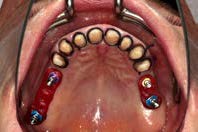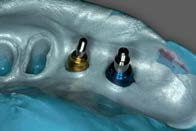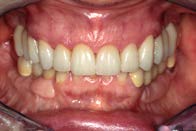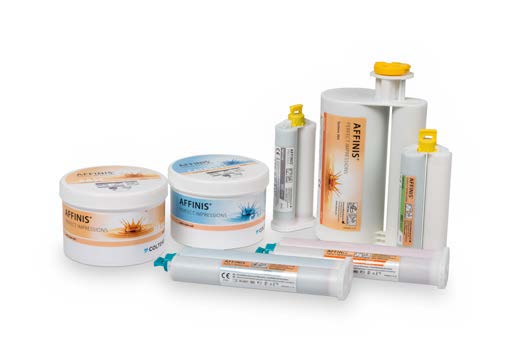![]()
Has this ever happened to you: The impression looks good, you and the dental technician are satisfied, the restoration fits perfectly on the model and then comes the shock: the patient attends the appointment and the crown does not fit. What could have gone wrong?
When it comes to taking impressions in particular, details are the tricky part. The most common impression indications are single crowns or small bridges, and fast setting impression material is often the first choice here.
However, chemical systems do not cure at the push of a button. Nonetheless, sophisticated formulations allow sufficient processing time and a short oral setting time, as shown by the steep setting curve (AFFINIS snapset) in the illustration. A fast setting characteristic is considered to be patient-friendly and minimises the risk of permanent, often invisible deformities.
However, as soon as the specified processing time is exceeded, the impression material continuously changes from the plastic to the elastic state and reacts sensitively to pressure, which can, for example, be caused when changing hands or by movement of the patient. Therefore, the impression must be kept as steady as possible in situ during the entire oral setting time in order to produce a precise impression.
This complex case by Dr. Kai Zwanzig illustrates impression taking of a very demanding, large-span item of work. In addition to the material used, a clean preparation technique and well-planned sulcus management are crucial for the success of an impression. The choice of impression technique itself also has a major impact on the quality. One of the most precise techniques is the double mix technique, which was applied here.¹




The self-contouring consistencies of AFFINIS wash materials let you achieve outstanding impression results without any bubbles and flashes.
Exceptional quality and precision are required, especially in critical cases. And AFFINIS PRECIOUS gives you just that: a reliable, highly precise material that can be used in any situation, no matter how difficult.

Shop Affinis
Publisher: Coltène/Whaledent Ltd.

References
(1) Luthardt RG, Walter MH, Quaas S, Koch R, Rudolph H. Comparison of the three-dimensional correctness of Impression techniques: a randomized controlled trial. Quintessence Int. 2010 Nov-Dec; 41(10):845-53